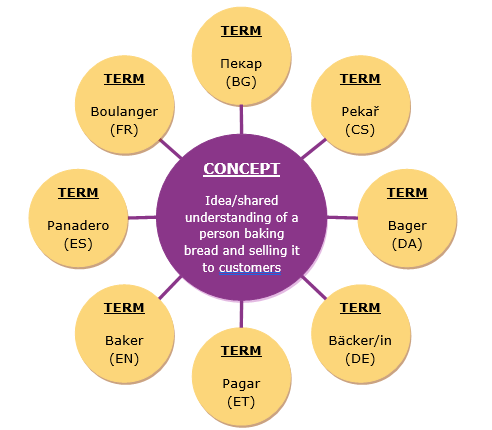Hierarchy view
ESCOpedia
In the development of ESCO, a distinction is made between concepts and terms. A term refers to the linguistic description of a concept, while a concept is the actual meaning of the term.
Example:
The idea or shared understanding of a person baking bread, pastries, etc. and selling it to customers is a concept. Terms that are frequently used to refer to the concept are e.g. "Baker" in English language or "Bäcker/in" in German language.
Terms are language-dependent. In ESCO, each concept will be associated with at least one term in all ESCO languages. In many cases, a language contains more than one term to refer to the same or a very similar concept. ESCO can thus contain several terms per concept.
Within the ESCO data model each term is a separate element in the ESCO data structure. Terms in ESCO always have a relationship with a concept. This is illustrated with the following chart showing a concept-term relationship for eight languages:

In ESCO, three types of terms are used: preferred terms, non-preferred terms and hidden terms. Terms used for occupations can indicate gender.
